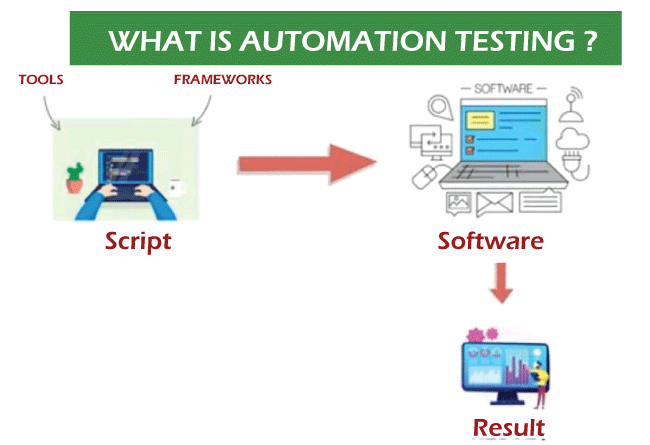The Future of Software Advancement: Using the Possible of Automation Evaluating for Faster, More Trusted Releases
In the realm of software program advancement, the mission for much faster, more trusted launches has actually long been a main emphasis. As innovation advancements and customer expectations develop, the duty of automation screening in achieving these objectives has actually become increasingly famous - automation testing. The prospective advantages of automation testing are large, promising not only to quicken release cycles yet likewise to boost the overall quality and uniformity of software application items. In a landscape where speed and accuracy are paramount, utilizing the abilities of automation screening stands as an important approach for remaining ahead.
The Power of Automation Testing
In the world of software application advancement, the execution of automation screening has actually verified to dramatically boost performance and top quality assurance processes. By automating repeated and lengthy hand-operated testing tasks, software program teams can enhance their screening efforts, lower human mistakes, and speed up the total growth lifecycle. Automation screening enables for the fast implementation of examination cases throughout different atmospheres and setups, offering programmers with rapid responses on the high quality of their code changes.
Among the essential benefits of automation testing is its capacity to enhance test insurance coverage, ensuring that even more attributes and functionalities are thoroughly examined. This detailed testing method helps recognize issues early in the advancement cycle, reducing the possibility of expensive insects reaching manufacturing. Automation testing promotes continuous integration and continuous distribution techniques, enabling teams to release software program updates a lot more often and dependably.
Accelerating Launch Cycles
The velocity of launch cycles in software program growth is important for staying affordable in the quickly developing tech landscape. Shortening the time in between launches permits companies to respond promptly to market demands, include individual comments without delay, and outmatch competitors in supplying innovative functions. By leveraging and embracing nimble methodologies automation testing tools, growth groups can improve their processes, recognize insects earlier, and guarantee a greater high quality item with each launch.
Increasing launch cycles additionally makes it possible for software application business to maintain a competitive side by quickly dealing with protection susceptabilities and adapting to altering regulatory needs. Frequent launches aid in structure client trust and commitment as individuals profit from continuous renovations and bug fixes. This iterative approach promotes a culture of constant renovation within advancement groups, urging collaboration, technology, and a concentrate on supplying value to end-users.
Ensuring Consistent Quality Control
Amidst the increased launch cycles in software program growth, keeping constant high quality guarantee ends up being paramount for making certain that each iteration meets the highest possible standards of capability and reliability. Regular quality control involves a systematic technique to testing and evaluating software application to determine and correct any flaws or problems without delay. To attain this, software advancement teams need to develop durable QA procedures that are incorporated throughout the advancement lifecycle. This consists of specifying clear top quality criteria, carrying out detailed testing at each phase of development, and leveraging automation screening tools to simplify the procedure.
Conquering Common Testing Challenges
Addressing and resolving common testing reference challenges is vital for making description sure the efficiency and efficiency of software development processes. One common difficulty is the absence of detailed test insurance coverage, where testers may ignore specific situations, resulting in potential bugs sliding into the end product. This issue can be mitigated by complete test planning, including varied screening methods, and leveraging automation testing to enhance insurance coverage. One more common obstacle is the upkeep of examination scripts, particularly in dexterous atmospheres where regular changes take place. Test script maintenance can be streamlined by making use of robust test automation frameworks that offer simple manuscript modifications and updates. Additionally, coordinating testing initiatives across various groups and divisions can position a challenge due to communication gaps and varying concerns (automation testing). Applying clear communication networks, developing standardized procedures, and cultivating collaboration with tools like concern trackers and job monitoring systems can help conquer this hurdle and guarantee smooth testing sychronisation. By proactively resolving these difficulties, software application advancement groups can enhance the quality and dependability of their releases.
Carrying Out Automation Testing Techniques

Constant combination and deployment pipes can further improve the automation screening procedure by immediately activating examinations whenever new code is dedicated. By embracing automation testing techniques, software application development teams can accomplish faster examining cycles, greater test protection, and inevitably provide even more reputable software application launches.
Verdict
To conclude, automation screening provides an effective device for increasing release cycles, guaranteeing consistent high quality assurance, and conquering typical screening obstacles in software application development. By harnessing the capacity of automation screening strategies, organizations can accomplish quicker and much more reputable launches. automation testing. Welcoming automation screening is important for staying affordable in the resource busy globe of software development

In conclusion, automation screening offers a powerful device for speeding up launch cycles, ensuring consistent high quality assurance, and getting rid of typical screening challenges in software application advancement.